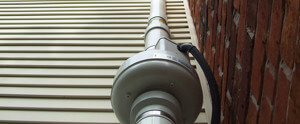February is National Care About Your Indoor Air Month
Quick round-up for protecting your indoor air quality.
Radon is not the only indoor air danger to your family's health. Once you have tested your home for radon (and mitigated if necessary) your job is not through!
A Few Other Ways to Improve Indoor Air Quality:
Consider getting your air ducts clean. Find out the benefits of air duct cleaning.
Increase ventilation by opening windows and running the exhaust fan, especially when cooking, cleaning or painting.
Pay attention to the signs of indoor air pollution: irritated eyes, nose and throat, headache, fatigue and dizziness.
Decrease humidity by running a dehumidifier to make an environment where mold, mildew and dust mites are less likely to live.
Avoid using harsh chemicals with harmful fumes. Instead, choose nontoxic cleaning products.
Keep smoke outside by never smoking and avoiding burning candles indoors.
Change the furnace filter regularly and choose a high-efficiency filter that can trap the smallest particles.
Find out more tips here.




